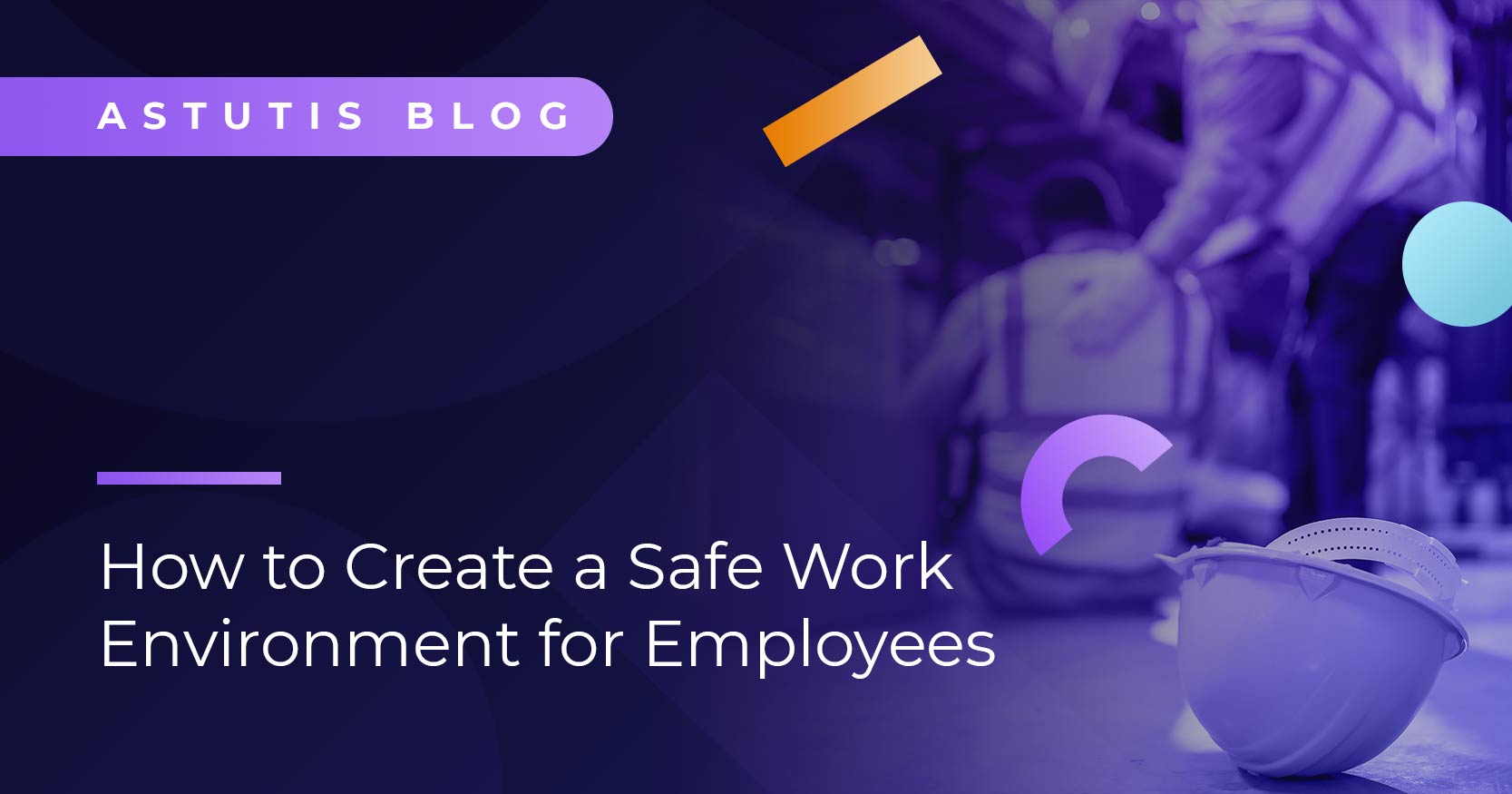Guide to the NEBOSH Certificate Unit NG2/IG2 Risk Assessment
Read our step-by-step guide on how to successfully answer each section of your NEBOSH General Certificate NG2/IG2 Practical Risk Assessment. Get practice advice on what to include based on the NEBOSH examiner's report. Plus, find out how to register and submit your assignment for marking.
This blog was updated in August 2022 to reflect changes to the course and changes to the learning methods available for learners across the globe.
If you’re taking the NEBOSH General Certificate, or even just thinking about it, you’ll know by now that the course is made up of two units:
- NG1/IG1: Management of Health and Safety
- NG2/IG2: Risk assessment
You need to pass both units to achieve your NEBOSH General Certificate qualification. In this guide, we’ve covered everything you need to know about how to complete your unit NG2/IG2 risk assessment.
What is the NEBOSH General Certificate Unit NG2/IG2 risk assessment?
Unit NG2/IG2 is the practical section of the NEBOSH General Certificate. It tests your ability to apply your learning in the real world.
You’re required to produce a risk assessment of your workplace that identifies a range of hazards. The risk assessment must be suitable and sufficient and communicate justified actions for improvement to the relevant people.
The unit has its own learning outcome. By the end of the unit, you’ll be able to:
“Do a general risk assessment in your workplace, profiling and prioritising risks, inspecting the workplace, recognising a range of common hazards, evaluating risks and (taking account of current controls), recommending further control measures and planning actions.”
The risk assessment is split into 4 stages:
- Description of your organisation and your methodology
- Risk assessment and hazard identification
- A description of 3 actions with justification
- Review, communicate and check
Each stage has a marking criteria which you need to pass. We’ve broken down what’s needed in each stage so you can stay right on track!
When do you complete the unit NG2/IG2 risk assessment?
The old NEBOSH General Certificate (2014) syllabus required you to submit your assignment within 2 weeks of sitting your written exam.
The new 2018 syllabus doesn’t put any timeframe on when you can submit your assignment, so you can choose a submission date that suits you. You can view upcoming NEBOSH General Certificate Risk Assessment submission dates here, under the Upcoming Dates section.
The assessment will primarily test your understanding of elements 5-11, but you’ll still need to draw on risk assessment protocols from earlier elements.
As you work through the course materials, you should think about how these concepts apply to your own workplace and make notes as to how you can refer to them in your assignment.
How long should it take to complete the NEBOSH General Certificate risk assessment?
You can take as long as you need on your assignment. NEBOSH recommend you take around three hours to complete all four stages of the assessment. This should allow you to show your understanding and complete a good quality risk assessment.
These three hours are for guidance only; you can take more or less time if you wish. Just remember to submit your final assessment by the submission date you’ve registered against.
What are the pass marks for the unit NG2/IG2 risk assessment?
There isn’t a numerical mark or grading for the risk assessment, just a pass or referral (fail).
There is, however, a marking criterion for each of the four stages. You must achieve a pass in each of the four stages to achieve a pass for the overall unit. A referral (fail) in any of the four stages will result in a referral for the whole assessment.
We’ve broken down the marking criteria for each section in this blog, so you can refer to it at any time.
Getting started with your NEBOSH Certificate Risk Assessment
Now you know what you’ve got to do, are you ready to get started? Great! Let’s cover off a few technicalities before we begin.
Register for your practical exam
As we said above, you must be registered against an exam date to submit your risk assessment. If you’re taking your course through a virtual or traditional classroom, you’ll automatically be registered against a submission date that fits your schedule.
If you’re studying online, you can choose a date that suits you. You should have sat your NEBOSH General Certificate Open Book Exam before you think about submitting your practical assessment.
You can see the NEBOSH General Certificate Risk Assessment submission dates here, under the Upcoming Dates section. Simply fill in the booking form under the Book Now section of the page to register for your assessment. Unfortunately, we can’t accept any external exam students.
Once you’ve registered, your course provider will send you a series of Word documents which you’ll use to conduct your assessment.
Choose a workplace
Your risk assessment should ideally be carried out based on your own workplace. This will make sure that it’s realistic and will benefit you and your organisation.
Your workplace should be large enough to provide a sufficient range of hazard categories and hazards. If you don’t have access to a suitable workplace, just get in touch with our course advisors. They’ll be able to arrange something suitable for you.
Remember to speak to the management of the premises before you start your risk assessment. You’ll want to make sure you can carry it out without endangering your own health and safety.
Download the marking criteria and your risk assessment pack
NEBOSH has detailed guidance on how you should tackle your assignment as well as a sample report. To ensure that we are only sharing the latest NEBOSH materials, including the latest assessment pack, you can access the resources section of the NEBOSH website here.
Keep these documents handy and refer to them as you go along. You should check each section of your assessment against the marking criteria to make sure you’ve included everything that is required to pass.
Stage 1: Description of Organisation and Methodology
You must use the headed tables in Part 1 of the assessment pack to complete the description of the organisation and the risk assessment methodology used.
Description of organisation (approximately 150 to 200 words)
This is where you set the scene for your assignment. You need to give a clear and concise description of your chosen organisation to make sure the examiner understands what your organisation does. You can change the name and location if you like (for confidentiality), but everything else should be factual.
You also need to think about the scope of the risk assessment. For example, are you going to look at the whole organisation or just a specific department or division? If you work for a large organisation, we recommend that you concentrate on a part of the organisation or a specific activity or process.
Remember, the NEBOSH examiner won’t be familiar with your workplace or industry. You want to give them enough information to judge whether your risk assessment is suitable and sufficient. If you provide an unclear or incomplete description, this could affect the marking of the risk assessment.
The marking criteria states you will need to include the following in your description:
- The name of the organisation
- Site location - you don’t need to give the full address, just the general location e.g., Leicestershire.
- How many workers are employed by the organisation?
- A general description of the organisation. This must include products manufactured or services provided, and the types of activities undertaken.
- A description of the area included in the risk assessment.
- Any other relevant information, such as who has the day-to-day responsibility for health and safety in your organisation. If you feel like there’s nothing relevant, then you can leave this point out.
NEBOSH gives the following as an example of a good organisation description:
"NGG Ltd is a medium-sized garage with offices, vehicle repair shop and paint spray booth. The business does a lot of body repairs on vehicles involved in accidents for insurance companies. Servicing and MOTs are also carried out for members of the public. Typical activities undertaken include moving spare parts from the stores to the workshop area, engine repairs, activities relating to servicing/MOTs, body repair, draining fuel/oil from vehicles, spray booth activities (including the use of solvent-based paints). The garage operates from 8 am to 6 pm on weekdays and is closed at the weekends. Workers are only required to work 7 hours per day so there are staggered start and finish times in place."
Methodology (approximately 200 words)
After you’ve given the description, you need to outline how you carried out the risk assessment (methodology used). This allows the NEBOSH examiner to evaluate the reliability and validity of your assessment.
You want to make the case for why you did what you did. You should fill in this section after you’ve completed your risk assessment, so you have work to refer to.
For your methodology, you must include:
- The sources of information that you consulted
- Who you spoke to.
- How the hazards and controls were identified – the hazards, what is already being done, any additional controls/actions that may be required.
You may also include anything else that is relevant to the completion of the risk assessment. This may seem like a small section, but if you don’t include it, then you’ll fail.
Stage 2: Risk Assessment
You must use the tables in Part 2 of the assessment pack to complete the risk assessment.
You need to find and record at least 10 different hazards from at least 5 different hazard categories. The hazard categories are the focus of elements 5-11 of the NEBOSH General Certificate syllabus:
- Physical and psychological hazards
- Musculoskeletal health
- Chemical and biological agents
- General workplace issues
- Work equipment
- Fire
- Electricity
It may seem obvious, but you must include the specified 10 hazards from 5 categories. Many learners fail by ignoring this simple point. If you only include 9 hazards from 6 hazard categories, or 11 hazards from 4 hazard categories, or include 10 hazards but don’t state the hazard category; then you’ll fail.
You must include the following details for each hazard to meet the marking criteria:
- The hazard and the hazard category (column 1)
- Who may be harmed and how (column 2)
- What you are already doing to control the hazard (column 3)
- What further controls or actions might be needed (column 4) – remember to take account of the hierarchy of control and the principles of prevention in when deciding on further controls.
- The timescales for completion of each action (column 5)
- The role of the person responsible for completing each action (column 6)
As you work through your risk assessment, you’ll see that column 3 (what you’re already doing) and column 4 (further controls needed) work together.
If you’re already doing enough to control the risk, there will be lots of controls listed in column 3 but very few (if any) in column 4. You might even just note that no further action is necessary.
On the other hand, if you have very few controls in place, column 3 will contain very little and column 4 will contain a lot more. Both scenarios are fine because they are realistic.
Stage 3: Prioritise 3 actions with justification
You must use the table in Part 3 of the assessment pack to prioritise your actions and justify your selection.
Once you’ve identified all your hazards, you need to pick the 3 that requires the most urgent action. If you only include 2, then you’ll fail.
Your actions can be associated with the same or different hazard categories. The important thing is that they need to be your highest priorities for action. You must also give a justification for why you think these are the highest priority/most urgent actions.
Your justification must include:
Moral, legal, and financial arguments for ALL actions (350 to 400 words)
You must make the case as to why these actions need to be addressed. Think about the over-arching legislation, such as the Health and Safety at Work Act, and the prosecution consequences for your organisation and those involved. Then refer to any financial impact such as sick pay, damaged equipment, enforcement actions and prosecution fees.
Don’t forget to hit home about the moral arguments – protecting workers should be a priority for any organisation. All workers deserve to work in an environment that is safe, healthy, and happy.
You can then move on to each specific action in more detail.
Legal implications for each action (100 – 150 words)
Your legal argument for your specific action must reference relevant legislation/standards.
For example, when talking about the control of hazardous substances in the UK, you should reference relevant duties under the Control of Substances Hazardous to Health Regulations 2002.
Likelihood and severity (75 - 150 words)
You need to consider the likelihood AND probable severity (taking account of current control measures) of injury, ill-health or harm occurring. You should consider:
- The types of injury, ill-health, or harm likely to occur
- The number of workers at risk
- How often the activity is carried out and how widespread the risk is. For example, does the same threat exist in other parts/branches/divisions/sites of the organisation?
Effectiveness of each action (100 to 150 words).
Here, you should detail how effective each action is likely to be in controlling the risk. You should describe:
- The intended impact of each action
- Justification for the timescale for completion for each action
- Whether you think the action will fully control the risk
Each action should be as impactful as the next. If you spend more time justifying one action, and not enough on the other, then you’ll fail.
Stage 4: Review, communicate and check
You must use the tables in Part 4 of the assessment pack to complete the review, communicate and check exercise.
The final part of the assessment is where you show your ability to communicate your recommendations to the relevant person. To meet the marking criteria, you must include:
- A realistic review date for the risk assessment and why you have chosen that review date (50-100 words).
- An indication of how the findings of the risk assessment are to be communicated (100 to 150 words). Think about whether it will be verbal or written, timeframes, methods (email, noticeboards, intranet), and who needs to know the information.
- An indication of how you will follow-up on the risk assessment to check that the actions have been carried out. (100 to 150 words)
If you miss any of these pointers in your communication review, then you’ll fail.
How to submit your assessment
You need to send your completed forms to your learning provider by email or post by your chosen submission deadline. They’ll send your assessment off for marking by an examiner appointed by NEBOSH.
NEBOSH General Certificate NG2/IG2 Risk Assessment Results
NEBOSH will email you your results within 50 working days of your chosen submission date. Provided you’ve passed your NG1/IG1 Open Book Exam, you’ll receive a hard copy certificate in the post within 12 weeks.
NEBOSH General Certificate Practical Risk Assessment Resources
We recommend you discuss your plan for your assignment with your course tutor. They can let you know whether your workplace is suitable and will give enough scope to be able to tackle this assessment properly.
You can’t submit drafts of your work to your tutor. They’re not allowed to pre-mark or comment on specific details. Still, they can give you pointers and answer your questions.
Click here to view our workplace risk assessment example
NEBOSH have a range of resources to help you with your assignment, including a sample report. You should read them all carefully before you start your assignment and refer to them regularly along the way:
- NG2: Risk assessment example
- NG2: Guidance and information for learners
- IG2: Risk assessment example
- IG2: Guidance and information for learners
All that's left to say is, good luck!
Related Blogs

Real Life Stories









